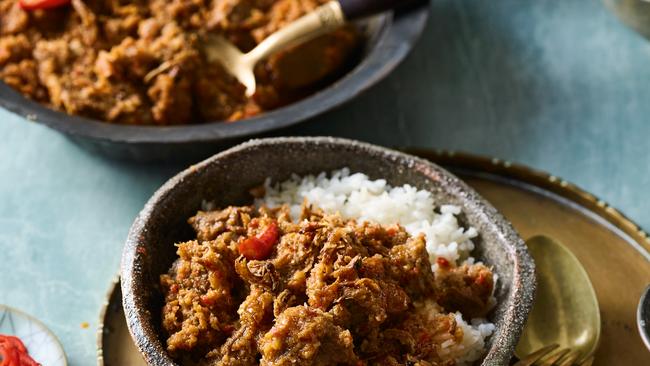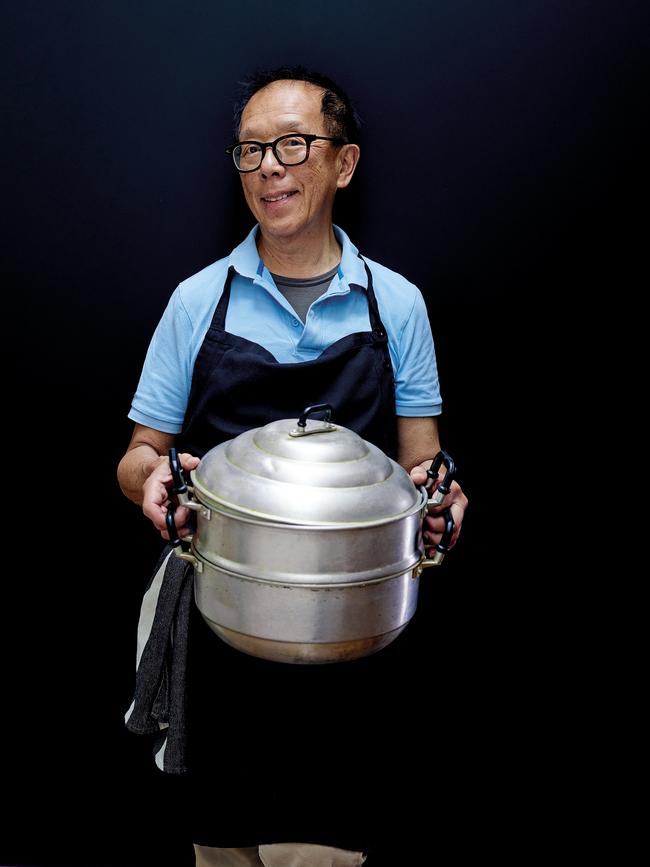The coconut-based sauce is reduced by long, slow cooking so it eventually “fries” the meat
Possibly the most magnificent Indonesian culinary export, this curry is fit for a king.

I grew up in Kuantan, a town on the east coast of Malaysia. Like many towns and cities in Malaysia, Kuantan is a melting pot of cultures. As the capital of the state of Pahang, it attracted Chinese, Indian and Malay settlers, and they brought with them their cultures and traditions. The consequence of this upbringing in a country that has a confluence of influences? I developed not only a sophisticated palate, but also a deep understanding of food and culture, its fluidity and its changeable nature depending on place, people and movement.
Beef rendang, possibly the most magnificent Indonesian culinary export, is the contribution of the Minangkabau people from West Sumatra, of which Padang is the capital. Properly cooked, this dish – first mentioned around the 1550s – is fit for a king, which is why it is served on festive occasions. Traditionally, rendang must be dry – the coconut-based sauce is heavily reduced by long, slow cooking so it eventually “fries” the meat.
Try too my Singapore eggplant and minced pork stirfry and my sambal snapper.


Beef rendang
Ingredients
- 2 lemongrass stalks (white part only), finely chopped
- 3cm piece ginger, peeled and chopped
- 4-5 thin slices fresh galangal, peeled and finely chopped
- 1 large onion, or 6 shallots, finely chopped
- 6-10 long red chillies, coarsely chopped
- 5 garlic cloves
- ⅓ cup neutral oil
- 700g beef oyster blade, cut into 5cm cubes
- 35g desiccated coconut, dry-fried in a pan until golden brown
- 2 cups coconut milk
- 1 teaspoon caster sugar
- Salt, to taste
Method
- Combine the lemongrass, ginger and galangal in a food processor and blend to a fine paste. Add the onion, chilli and garlic and blend again until a coarse paste forms. Heat the oil in a heavy-based saucepan over medium heat, add the paste and fry, stirring, for about 8 to 10 minutes, or until the oil separates into a gorgeous red. Add the beef and fry, turning occasionally, until lightly browned all over (5 to 6 minutes).
- Add the coconut and fry for another minute, then add the coconut milk, sugar and 2 cups water. Bring to the boil, stirring frequently to prevent curdling, then reduce the heat to low and leave to bubble gently, stirring now and then, until the beef is tender and the coconut milk much reduced (about 1.5 to 2 hours).
- Once the coconut milk is beginning to turn to oil, remove the beef from the saucepan. Continue to stir the sauce (be careful; it will spit) until it is almost evaporated and almost dry, about 5 to 10 minutes.
- Return the beef to the saucepan, stir gently, season to taste with salt and serve with rice.
Serves 6
